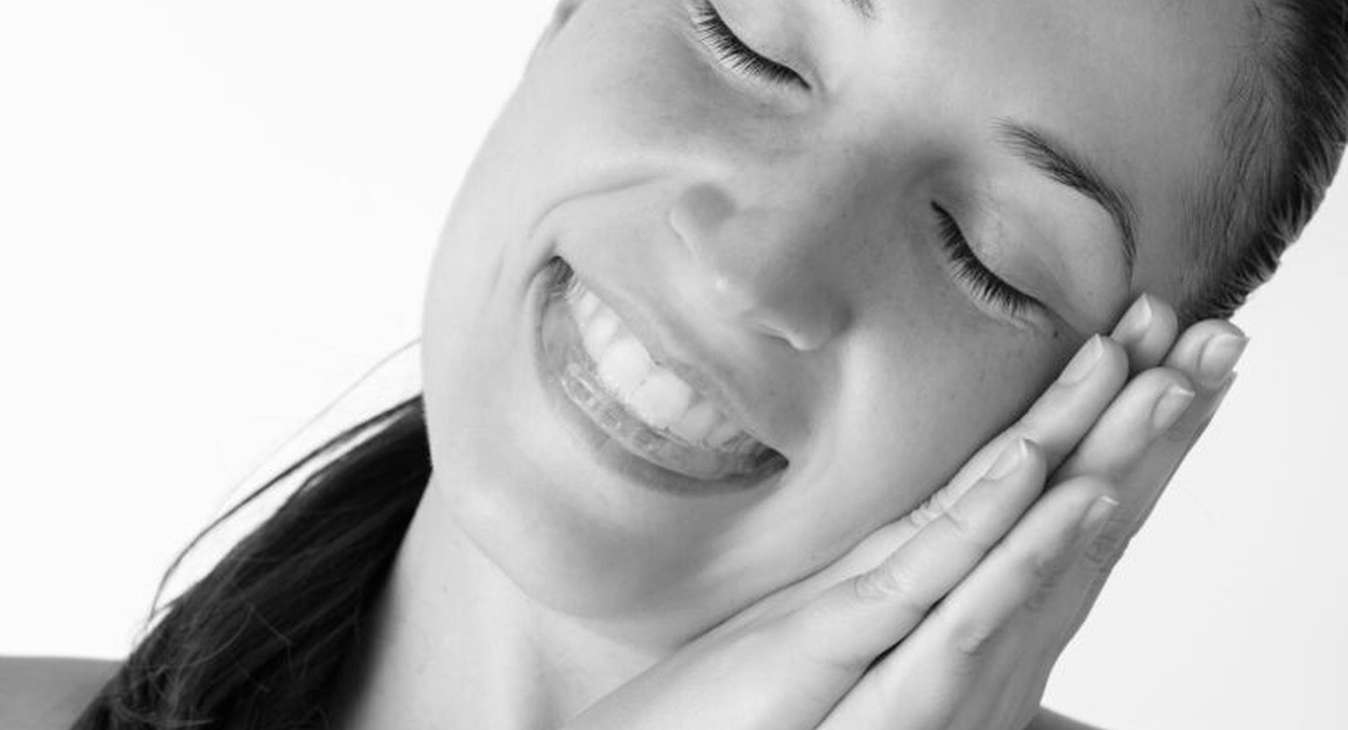What Is Teeth Grinding?
Teeth grinding, also known as bruxism, is the involuntary clenching or grinding of teeth, typically occurring during sleep. This condition can be caused by stress, anxiety, misaligned teeth, or sleep disorders. Symptoms include jaw pain, headaches, and worn-down teeth. Early diagnosis and treatment are essential to prevent long-term tooth and gum damage and alleviate discomfort.
What to Know About Bruxism Treatments in Argentina.
Teeth grinding, or bruxism, often happens without you noticing—especially during sleep. Over time, it can wear down your teeth and leave your jaw feeling sore. Here, you’ll find simple explanations to help you understand what it is and what you can do about it.
- Do You Have Sensitive Teeth
- Do I need to Protect My Teeth?
- How to Combate Teeth Grinding


How do I know if I am Teeth Grinding?
If you wake up with a sore jaw or get frequent headaches around your temples, you might be grinding your teeth. Sensitivity to hot or cold foods can also be a sign. If this sounds familiar, it’s worth checking in with a dentist to protect your teeth early on.
How Different Treatments for Teeth Grinding Can Help You Out.
Teeth grinding can cause discomfort and wear over time, but there are ways to manage it. From dental treatments to relaxation techniques, this section gives you an overview of options you can explore with your dentist.
Mouth Guards and Splints
Types of mouth guards. Custom-fitted guards, made using impressions of your teeth, generally offer a better fit and more comfort than store-bought versions. They can help protect your teeth and may support better sleep quality.
Benefits and how they work. These guards cushion your bite and reduce pressure on the jaw. By doing so, they can help limit wear on teeth and ease jaw discomfort.
What you will notice: Many people report reduced jaw pain and sleeping more comfortably while using a mouth guard.
Dental Corrections
Adjustments to teeth alignment. Orthodontic options like braces or clear aligners may improve your bite, helping reduce grinding by balancing how pressure is applied when you chew.
Use of crowns and reshaping teeth. Treatments like dental crowns or reshaping help restore damaged teeth and reduce irritation that might make grinding worse.
What you will notice: You may experience a more balanced bite and improved comfort when chewing or speaking.
Therapies and Exercises
Physical therapy. Gentle jaw exercises can help relax overactive muscles and reduce tension, which may lower the risk of nighttime grinding.
Relaxation techniques. Practices like meditation, breathing exercises, and muscle relaxation may help manage stress—one possible factor in bruxism.
What you will notice: You may feel less stressed and notice a reduction in grinding-related discomfort.
Behavioral therapy. Behavioral approaches can help change habits linked to grinding, often by identifying stress patterns and addressing them gradually.
What you will notice: Many people experience better mental well-being and fewer grinding episodes over time.
Innovative Treatments
Latest advancements in mouth guard technology. Custom-fitted, durable mouth guards and smart guards with sensors provide enhanced protection and real-time data for personalized adjustments.
Biofeedback therapy for stress management. Biofeedback helps control physiological responses, reducing stress and bruxism. What you will notice: Better stress management and fewer grinding episodes.
Cognitive-behavioral therapy (CBT) tailored for bruxism patients. CBT identifies and changes negative thought patterns, managing stress and reducing symptoms.
What you will notice: Long-term relief from grinding and improved mental health.
Advanced Treatments
Botox for bruxism. Some dentists and doctors use small doses of Botox to relax jaw muscles, which may help reduce grinding and related pain.
What you will notice: Some people report less jaw tension and fewer grinding symptoms after treatment.
Medication options. In certain cases, a healthcare provider may suggest medications like muscle relaxants or stress-reducing prescriptions to help manage symptoms.
What you will notice: You might notice a calmer jaw and a general reduction in tension.
Surgical options (if applicable). For structural causes of grinding, a dental or medical specialist may recommend jaw surgery, though this is typically considered after other treatments.
What you will notice: In select cases, surgery may offer long-term relief by addressing underlying structural concerns.
Holistic Treatment Options
Integrative approaches combining dental and medical treatments. Some people benefit from a combination of dental support and stress management strategies to address both physical and emotional aspects of bruxism.
What you will notice: You may feel more in balance and notice fewer grinding symptoms when both body and mind are supported.
Role of nutrition and dietary adjustments in managing bruxism. Cutting back on caffeine and focusing on a balanced diet may help support your overall health and reduce triggers.
What you will notice: Improved energy and fewer symptoms linked to grinding.
Importance of exercise and physical fitness. Regular activity can help reduce stress and support better sleep—both helpful in managing bruxism.
What you will notice: More physical energy and a possible decrease in nighttime teeth grinding.
Procedures of Teeth Grinding Treatments.
There’s no one-size-fits-all solution for teeth grinding, but several treatments may help. In this section, you’ll find a simple overview of common options, what the process looks like, and how care before and after treatment can support your comfort. You can also watch the video for a quick introduction.
Steps Before, During and After
The Most Common Teeth Grinding Treatments.
Bruxism can be managed in different ways, depending on your situation. Below, we’ve outlined a few commonly used treatments to give you a clear starting point when exploring your options.
Custom-Fitted Mouth Guards
Before Procedure: A consultation helps the dentist evaluate your symptoms and decide whether a custom-fitted mouth guard could be useful. Dental impressions are taken to create a personalized mold.
During Procedure: At a follow-up, the mouth guard is adjusted to ensure a comfortable and secure fit.
After Procedure: Wearing the guard nightly and attending check-ups helps maintain its condition and effectiveness.
Keep in mind: Consistent nightly use and regular dentist visits can help ensure the mouth guard continues to provide protection.
Orthodontic Treatments
Before Procedure: An orthodontic consultation includes X-rays, photos, and impressions to map out a personalized treatment plan.
During Procedure: Braces or aligners are fitted, with follow-up visits needed for adjustments and progress checks.
After Procedure: Retainers may be recommended to keep teeth aligned. Ongoing check-ins help monitor long-term stability.
Keep in mind: Sticking to your treatment schedule and following care instructions supports a smooth and successful outcome.
Dental Restorations
Before Procedure: The dentist prepares the affected tooth by shaping it and removing decay. Impressions are taken to make a custom crown.
During Procedure: A temporary crown is placed first. At a later visit, the permanent one is fitted and bonded.
After Procedure: Avoid very hard foods and keep up with daily oral care. Routine check-ups help the crown last longer.
Keep in mind: Good oral hygiene and regular dental visits are key to keeping your restoration in good condition.
Botox Injections
Before Procedure: A consultation allows your dentist to assess symptoms and discuss whether Botox might be a suitable option. Potential effects and risks are also reviewed.
During Procedure: Small amounts of Botox are injected into the jaw muscles to reduce grinding activity. The process is usually quick and well tolerated.
After Procedure: Effects typically appear within days and can last for several months. Repeat treatments may be needed to maintain results.
Keep in mind: Follow-up appointments help track results, and it’s important to contact your provider if you notice any side effects.
Cost of Bruxism Treatments:
Argentina vs. USA.
In general, treating teeth grinding doesn’t usually result in high dental bills. Below, we’ve compared estimated treatment prices between Argentina and the United States to give you a clearer idea of what to expect.
| Teeth Grinding (Bruxism) Treatment | US & Canada | Argentina |
|---|---|---|
| Initial Consultation | $100-$250 | $50-$120 |
| Dental X-rays (If Needed) | $50-$200 | $20-$60 |
| Custom Night Guard | $300-$800 | $100-$300 |
| Stress Management Therapy | $100-$500 | $50-$200 |
| Follow-Up and Adjustments | $100-$300 | $50-$150 |
| Total Cost of Bruxism Treatment | $650-$2,050+ | $270-$830+ |

The Impact of Clenching and Bruxism in Daily Life.
Teeth grinding or clenching can cause more than just discomfort. It may lead to jaw pain, headaches, or issues like TMJ, and over time, can wear down your teeth. Enamel erosion, sensitivity, and even small fractures are common. For more details, check out our full article on how this affects your oral health.
Which Dentist For Teeth Grinding in Buenos Aires
Would Be The Best Choice?
Choosing the right country and clinic for teeth grinding care makes a real difference. This section helps you explore safe, trusted options for professional treatment. Our detailed guide explains what to look for when selecting a dental clinic abroad.
Detailed Guide
To Choose a Dental
Clinic Abroad
Personalized Comprehensive Plan.
Why it’s important: A customized plan can make a real difference in how bruxism is managed. Addressing both current symptoms and future risks helps support long-term comfort and oral health.
What to look for: Choose a clinic that offers custom guards, orthodontic options, or additional support like physical therapy or Botox. Ask for clear details on what to expect during treatment, including care, pricing, and outcomes.
Keep in mind: It helps to work with a dentist who understands bruxism and can create a plan that fits your needs and routine, offering the best chance of ongoing relief and protection.
A Dentist Specialized in Bruxism.
Why it’s important: Seeing a dentist familiar with bruxism helps ensure your symptoms are properly evaluated and managed. This kind of care may reduce discomfort, protect your teeth, and help limit further damage over time.
What to look for: Find professionals with experience in TMJ issues and teeth grinding. Checking their qualifications, treatment options, and patient reviews can help you find a good fit for your situation.
- Check Online Reviews
- Verify Accreditations
- Always Schedule an Online Call
- When Its Very Cheap, Be Cautious
Essential to Know For Teeth Grinding Therapy in Buenos Aires.
Before actually engaging further to seek for help when you face bruxism, it is important to understand what are certain essentials things to keep in mind related to your teeth grinding therapy in Buenos Aires.
Accurate Diagnosis
Understanding the reason behind your teeth grinding is the first step in managing it. In Buenos Aires, many dentists use tools like digital bite analysis and electromyography (EMG) to assess what may be contributing to your symptoms. With this insight, a treatment plan tailored to your needs can be developed more effectively.
Integral Treatment Approach
Teeth grinding is often linked to other factors like stress, bite issues, or habits. In Buenos Aires, care often includes a mix of custom mouth guards, stress-reducing techniques, and behavioral support. A combined approach can help ease tension, protect your teeth, and address what’s contributing to the grinding.
Bite Analysis and EMG
Some clinics in Buenos Aires use advanced tools like digital bite analysis, EMG, and imaging to better understand how your jaw moves and responds. This helps create more precise treatment plans. With this technology, dentists can take a detailed look at what’s happening and offer solutions that fit your specific needs.
Custom Fitted Mouthguards
Custom-fitted mouth guards are commonly used to help manage bruxism and reduce damage from grinding. Made from detailed impressions of your teeth, they’re designed to fit comfortably and protect against uneven pressure on your jaw and enamel. Many people find they help reduce jaw tension and wear over time.
Anxiety Management Advice
Since stress and anxiety can often trigger teeth grinding, learning how to manage them is a key part of treatment. Techniques like deep breathing, meditation, or therapy can help you cope better. Dentists may also suggest working with professionals who offer behavioral strategies tailored to your habits and lifestyle.
Follow-up Care and Support
Regular follow-ups are important to keep your bruxism treatment on track. They give your dentist a chance to check how things are going and adjust your plan if needed. Ongoing care helps support long-term relief and ensures your treatment continues to work for you.
Why Patients Value Us.
Check in a separate section to learn why people choose us to help them finding reliable dentists in Argentina.
Why People Choose Us
Teeth Grinding Therapy.
Packages and Prices.
Treatments offered by our listed dentists come with clear, fixed pricing. If extra care is needed, the plan can be adjusted—always with transparent costs.
Grinding Gone
Treatment duration between 1-3 daysSame Day Treatment
*All-In Price
-
Free Checkup
-
Scan & Pro-Cleaning
-
Professional Grinding Guard
-
Care Coach
-
Online Aftercare
*Full Porcelain Bridge Structure and for 1 Tooth
A Direct Agreement with The Dentist
Grinding Complete
Treatment duration between 1-3 daysSame Day Treatment
*All-In Price
-
Free Checkup
-
Scan & Pro-Cleaning
-
Professional Grinding Guard
-
Essential Care Treatment*
-
Online Aftercare
*Includes Fillings for Caries
A Direct Agreement with The Dentist
Grinding Makeover
Treatment duration between 2-3 daysSame Day Treatment
*Estimated Price
-
Free Checkup
-
Scan & Pro-Cleaning
-
Professional Grinding Guard
-
Smile Makeover Light*
-
Online Aftercare
*Includes a Whitening and Full Bondings
A Direct Agreement with The Dentist
Reviews of Teeth Grinding Treatments.
While bruxism treatments are less commonly discussed, many patients have shared their experiences after visiting one of the clinics in our network. Their reviews offer a glimpse into what the process felt like.







Plan Your Intake. Online. For Free.
If you’re noticing jaw or gum discomfort, you can plan a free online intake with one of the dentists we work with. It’s a helpful first step toward understanding what might be going on.
Frequently Asked Questions (FAQs) on Teeth Grinding and Treatments.
Since bruxism therapy is a less common treatment and usually noticed by a patient by its symptoms, we have listed certain frequently asked questions by our patients for you.
Why am I suddenly grinding my teeth when I sleep?
Suddenly grinding your teeth at night, known as sleep bruxism, can be triggered by several factors, including increased stress or anxiety, changes in sleep patterns, or the side effects of certain medications. Sleep disorders, such as sleep apnea, may also contribute. Managing stress and seeking treatment, like using a custom mouthguard, can help alleviate the issue.
How do I stop my teeth from grinding overnight?
To stop grinding your teeth overnight, consider these strategies:
- Use a Nighttime Mouth Guard: Protects your teeth from wear and tear.
- Practice Stress-Relief Techniques: Relax before bed with deep breathing or gentle jaw massages.
- Be Aware of Clenching Habits: Pay attention to daytime clenching.
- Avoid Chewy Foods: Reduce strain on your jaw muscles.
- Exercise Regularly: Helps alleviate stress that can cause bruxism.
These methods can help reduce or prevent nighttime teeth grinding.
Does sleeping with a mouth guard help?
Sleeping with a mouth guard can be highly beneficial for those who grind their teeth or experience jaw discomfort. A mouth guard helps to protect your teeth from wear and tear caused by grinding, reduces the risk of jaw pain, and alleviates symptoms associated with TMJ disorder. Additionally, it can help minimize snoring, contributing to a better night’s sleep.
What kind of night guard is best for clenching?
When choosing a night guard for clenching, an upper night guard is often considered the best option. It is designed to provide a cushion between the upper and lower teeth, reducing the impact of clenching, which typically involves the teeth coming together forcefully during sleep. This type of guard is effective in preventing damage and alleviating discomfort associated with clenching.
How damaging is teeth grinding?
Teeth grinding, also known as bruxism, can be highly damaging if left untreated. Over time, it can lead to cracked, loosened, or even lost teeth. Additionally, grinding can cause significant jaw problems, including pain and dysfunction. It’s important to address bruxism early to prevent these serious issues and protect your oral health.
How to heal bruxism?
To heal bruxism, a combination of treatments may be necessary. Common approaches include using a mouthguard to protect teeth during sleep, practicing stress management techniques like meditation or yoga, and performing jaw muscle exercises. In some cases, Botox injections or muscle relaxants may be recommended. Avoiding chewy foods and using warm compresses can also help alleviate symptoms.
Is there a natural way to stop grinding your teeth at night?
Yes, there are natural ways to stop grinding your teeth at night. Stress management techniques such as yoga and meditation can help reduce nighttime teeth grinding. Additionally, using warm compresses on the jaw before bed and avoiding stimulants like caffeine can also alleviate bruxism. Practicing proper sleep hygiene and staying hydrated are other effective natural remedies.
What can I put in my mouth at night to stop grinding teeth?
To prevent teeth grinding at night, using a custom-made night guard is highly effective. This dental device fits your teeth precisely, offering better comfort and protection than over-the-counter options. Wearing a night guard consistently can help reduce the damage caused by sleep bruxism, preventing teeth clenching and protecting your smile.
What happens if teeth grinding is left untreated?
If teeth grinding is left untreated, it can result in serious consequences such as sleep disorders, significant dental damage like tooth erosion, and loose or cracked teeth. It may also lead to Temporomandibular Joint (TMJ) disorder, which causes pain and discomfort in the jaw. Addressing teeth grinding early can prevent these complications.
Ask Your Question
At Teeth Traveler, we’re here to share helpful information — not to offer medical advice. This information on this page is for general informational purposes only and does not constitute medical advice, diagnosis, or treatment. Teeth Traveler is not a healthcare provider and does not offer medical services. The clinics listed on our platform operate independently and are responsible for the care they provide. While we aim to offer helpful guidance, readers are encouraged to consult directly with licensed dental professionals before making healthcare decisions or pursuing treatment abroad. No rights may be derived from the information provided on this page. For more details, check our disclaimer and terms of use.
